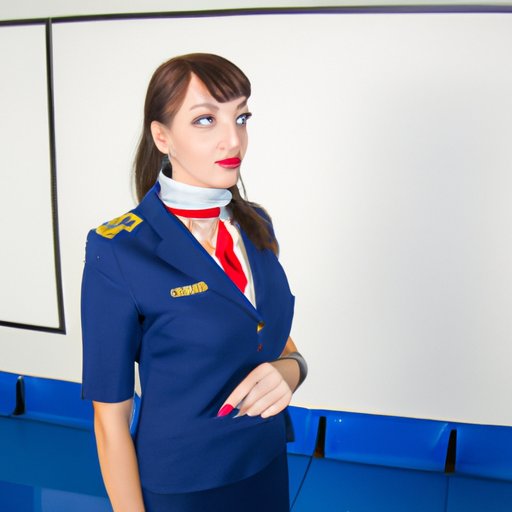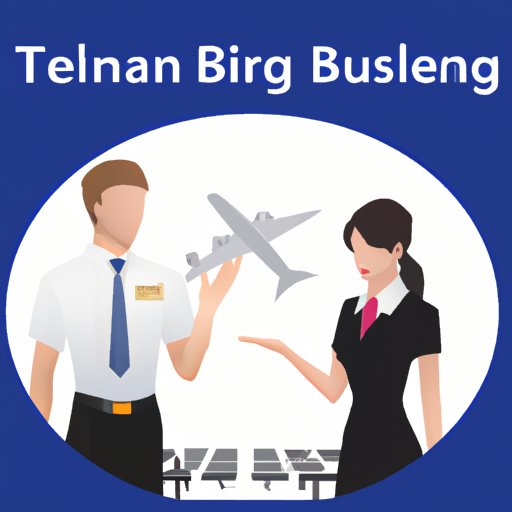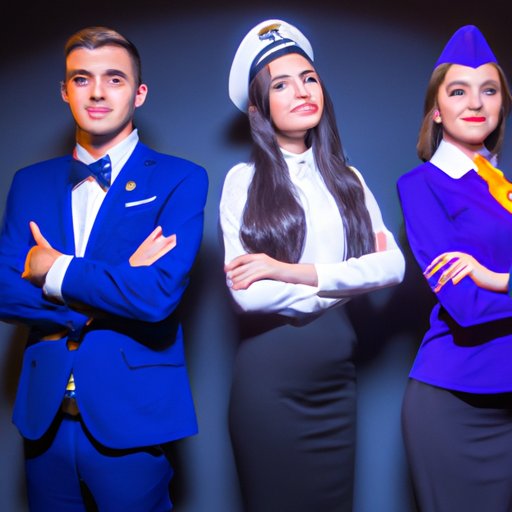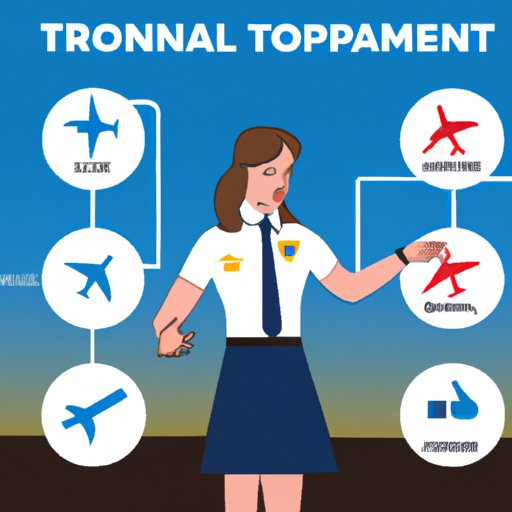I. Introduction
A career as a flight attendant is an exciting one that offers many benefits to those who are qualified and willing to take on the challenge. The job requires employees to have excellent customer service skills and the ability to remain calm under pressure. It also requires them to be knowledgeable of safety practices and regulations, as well as understanding of cultural differences across international flights. In order to become a flight attendant, applicants must meet certain qualifications and pass through a comprehensive training program.
A. Overview of the Qualifications and Requirements for Becoming a Flight Attendant
The first step to becoming a flight attendant is meeting the minimum requirements. Generally, airlines will require applicants to be at least 18 years old, possess a valid passport, possess basic computer skills, and be able to speak English fluently. Depending on the airline, some may also require applicants to have a high school diploma or GED.
In addition to these requirements, airlines usually have physical fitness requirements for flight attendants. According to a study conducted by the National Institute for Occupational Safety and Health (NIOSH), “the majority of airlines require that flight attendants be able to lift up to 50 pounds, walk up and down stairs, and stand for long periods of time without difficulty.”
B. Benefits and Challenges of Being a Flight Attendant
Being a flight attendant comes with a variety of benefits and challenges. On the positive side, flight attendants often get to travel to different parts of the world and experience different cultures. They also get to work with a diverse group of people and build relationships with passengers and crew. Flight attendants also receive competitive salaries and benefits packages.
On the other hand, being a flight attendant can be challenging at times. Flight attendants are expected to be available 24/7 and are often away from family and friends for extended periods of time. Additionally, they must adhere to strict rules and regulations set forth by the airline and the Federal Aviation Administration (FAA). They must also remain calm in difficult situations and provide exceptional customer service.

II. Flight Attendant Training Process
Once applicants meet the qualifications and requirements, the next step is to go through the flight attendant training process. This process typically consists of classroom instruction and hands-on training. During the classroom portion, trainees will learn about FAA regulations, aircraft safety procedures, emergency medical procedures, and customer service techniques.
A. Outline of the Flight Attendant Training Process
The flight attendant training process typically includes the following steps:
- Pre-training: Trainees attend an orientation session where they receive information about the job and the company.
- Classroom instruction: Trainees learn about FAA regulations, aircraft safety procedures, emergency medical procedures, and customer service techniques.
- Hands-on training: Trainees practice safety procedures in an aircraft simulator and practice customer service techniques in role-playing scenarios.
- Final exam: Trainees must pass a written examination and demonstrate proficiency in all areas to become certified.

B. Training Courses Included in the Flight Attendant Training Process
During the flight attendant training process, trainees will typically receive instruction in the following courses:
- Emergency Procedures: Trainees will learn about the various types of emergencies that could occur during a flight and how to respond to them.
- Safety Procedures: Trainees will learn how to properly use safety equipment such as seat belts, oxygen masks, and fire extinguishers.
- Customer Service: Trainees will learn how to provide excellent customer service to passengers and how to handle difficult situations.
- Cultural Awareness: Trainees will learn about different cultures and how to interact with passengers from different backgrounds.
- First Aid/CPR: Trainees will learn how to administer first aid and CPR in case of an emergency.
III. Responsibilities of a Flight Attendant
The primary responsibility of a flight attendant is to ensure the safety and comfort of passengers. This includes both onboard and ground responsibilities. Flight attendants must be familiar with the layout of the aircraft and understand the safety procedures and regulations.
A. Onboard Responsibilities
Onboard responsibilities include:
- Making sure passengers follow safety instructions and comply with regulations.
- Assisting passengers with any needs or requests.
- Assisting with boarding and disembarking.
- Serving food and drinks.
- Demonstrating emergency evacuation procedures.
- Providing first aid or CPR if necessary.
B. Ground Responsibilities
Ground responsibilities include:
- Checking the aircraft for cleanliness and safety.
- Restocking the aircraft with supplies.
- Assisting passengers with check-in and baggage handling.
- Greeting passengers upon arrival.
- Answering questions and providing assistance when needed.
IV. Tips and Strategies for Succeeding as a Flight Attendant
To be successful as a flight attendant, there are certain tips and strategies that can help make the job easier. These include proper time management, interpersonal communication skills, and stress management.
A. Proper Time Management
Time management is essential for flight attendants. Since flights often run on tight schedules, flight attendants must be able to prioritize tasks and manage their time efficiently. This means being able to multitask, anticipate needs, and stay organized. Proper time management will help flight attendants stay on top of their duties and ensure that flights run smoothly.
B. Interpersonal Communication Skills
Interpersonal communication skills are important for flight attendants since they must interact with passengers and crew on a daily basis. Flight attendants must be able to communicate clearly and effectively and be able to resolve conflicts in a professional manner. Good interpersonal communication skills will help flight attendants provide excellent customer service and build strong relationships with passengers and crew.
C. Stress Management
Flight attendants often face stressful situations while on the job. It is important for them to be able to manage their stress levels in order to stay focused and perform their duties properly. Stress management techniques such as deep breathing and meditation can help flight attendants stay calm in difficult situations.

V. Successful Flight Attendants and their Stories
There are many successful flight attendants who have achieved success in their careers. Here we will look at one example of a successful flight attendant and their story.

A. Profile of a Successful Flight Attendant
Jill is a successful flight attendant for a major airline. She has been working as a flight attendant for over 10 years and has received numerous awards for her excellent customer service. She is passionate about her job and loves to travel and experience different cultures.
B. Story of a Successful Flight Attendant
When Jill first started as a flight attendant, she was nervous but determined to succeed. She studied hard for the training program and passed the final exam with flying colors. Once she started her job, she quickly gained the trust of her coworkers and passengers. She learned how to manage her time efficiently and provide exceptional customer service. Through her dedication and hard work, she became one of the most respected flight attendants in the airline.
VI. Conclusion
Becoming a flight attendant is a rewarding career that offers many benefits and opportunities to those who are qualified and willing to take on the challenge. To become a successful flight attendant, applicants must meet certain qualifications and pass through a comprehensive training program. Once hired, flight attendants must be familiar with onboard and ground responsibilities, as well as possess proper time management, interpersonal communication skills, and stress management. With dedication and hard work, anyone can become a successful flight attendant.
(Note: Is this article not meeting your expectations? Do you have knowledge or insights to share? Unlock new opportunities and expand your reach by joining our authors team. Click Registration to join us and share your expertise with our readers.)
